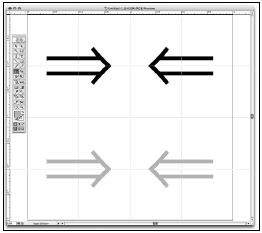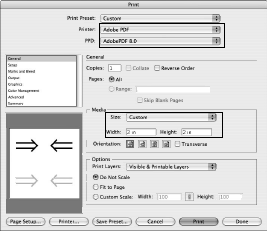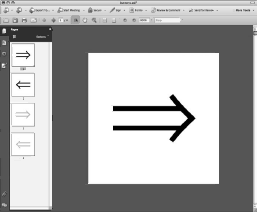Creating Multi-Page in PDFs
Quite often, with just about any application, users find ways to work with a program in a manner that was not intended by a developer. This is most apparent when looking at the way designers use Adobe Illustrator. Illustrator was created for artists who needed an electronic artboard to create illustrations and drawings.
But when the program got to the hands of the graphic artists, it was frequently used as a page layout program. For years graphic artists pleaded with Adobe to offer support for multiple pages. No matter how many rich features were added to Adobe InDesign (which was created as a page layout program), the die-hard Illustrator users never abandoned their favorite tool.
Today, great numbers of designers still first grab Illustrator to create page layouts. It wasn’t until Illustrator CS2 was released that Adobe responded. Perhaps not completely the way designers wanted to work with multiple pages, but in part, Illustrator now supports multiple pages.
The only way you can create a multi-page document in Illustrator is when exporting to Adobe PDF. Illustrator’s approach to multiple page documents is quite different than any other application. If creating multi-page documents in Illustrator is your interest, follow the steps below:
- Set up the page size. For this demonstration I want to create four buttons to use in Acrobat as navigation buttons to move back and forth in a PDF document. Two buttons are needed for default appearances and two buttons will appear as rollovers so when the cursor appears over a button, the button color or shape changes—much like you find in Web page designs.
Rather than create four separate files, I want to create a single PDF document with four separate pages. For buttons, my page size needs to be just large enough for all four buttons. When I select File > New in Illustrator, I specify my page size for 2 inches by 2 inches.
These dimensions are sufficient to create four pages each at 1-inch square. The Illustrator artboard can be set up as a single page only. The page will be tiled to produce individual smaller pages when you create the PDF file. Therefore, 2 square inches is large enough to create four separate pages each at 1-square-inch.
Note that you could create an artboard large enough to accommodate several letter or tabloid size pages if you want to use Illustrator for a traditional page layout.
- Create the button icons. You can use font characters from Symbols, Wingdings, or other stylized fonts, draw shapes, or add symbols from the Symbols palette, and so on. In my example, I use some characters from the Symbol font that appear as left and right arrows.
I copied the two characters and changed the color on the duplicated characters. All this is arbitrary. Feel free to use any design of your choice. The point is you need four images centered in four quadrants, as shown in Figure 4. Notice guidelines were drawn to help position the characters in each quadrant.
- Set Print Attributes. Chose File > Print and select Adobe PDF for the Printer and AdobePDF 8.0 for the PPD at the top of the Print dialog box. Under the Media area, type 2 for the Width and Height and choose Custom for the size. The Print dialog box General settings should appear, as shown in Figure 5.
- Set the Tile attributes. Click Setup in the left pane of the Print dialog box and select Tile Imageable Areas from the Tiling pull-down menu. The tiled pages should appear with dashed lines in the page thumbnail preview. If you don’t see dashed lines, the file won’t export as multiple pages.
- Click Done. Be certain to click Done and not Cancel or Print to preserve the settings.
- Save as Adobe PDF. You must use the Adobe PDF (*.PDF) file format. A Native Illustrator .ai format won’t produce multiple pages. Select File > Save As and choose Adobe PDF (*PDF) for the Type (Windows) or Format (Macintosh). Click Save and the Save Adobe PDF dialog box opens.
- Check Create Multiple-page PDF from Page Tiles in the General settings. Click Save PDF and the file is saved.
- Open the PDF in Acrobat. When the file opens, click the Pages pane. You should see four separate pages, as shown in Figure 6.
A file like the one created in these steps can be used as button faces with button form fields. Rather than have four separate files, you can choose any image in a multi-page document to add as a button face in Acrobat.
In the Appearance settings in Button properties the Select Icon dialog box lists all pages in a PDF document. You can scroll the elevator bar on the right side of the dialog box to view different pages.


